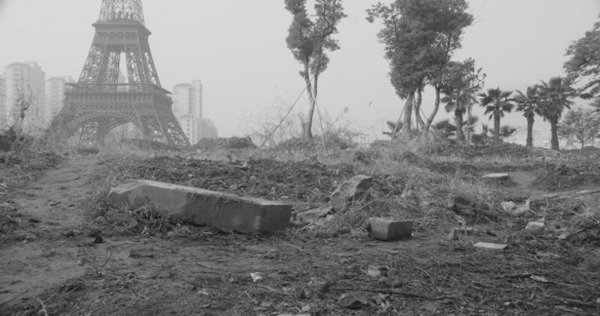City Walks
dal 3/2/2015 al 4/4/2015
Segnalato da
3/2/2015
City Walks
Bonniers Konsthall, Stockholm
The exhibition presents six artists depict encounters with urban centres from across of the globe. The city is portrayed as a place for interpersonal meetings, historical power games, and global politics. Above all, City Walks poses thoughtful questions around precisely what spending one's life in an ever-expanding urban environment entails.

This spring’s first exhibition at Bonniers Konsthall has the city as its theme. Six artists depict encounters with urban centres from across of the globe. The city is portrayed as a place for interpersonal meetings, historical power games, and global politics. Above all, City Walks poses thoughtful questions around precisely what spending one’s life in an ever-expanding urban environment entails.
Amidst a labyrinth of demolished walls and overgrown bamboo, video installation Intercourses is screened. Large projections display imagery of a camera following three African men around a city resembling Paris. They move throughout the city accompanied by the sound of a persistent wind, as if the city itself was emanating a disconcerting tone. The camera pans over boulevards and the Eiffel Tower, yet something seems awry. Store signage written in Chinese and skyscrapers towering above the whitewashed facades reveal that the installation is filmed in China, not Europe. Danish artist Jesper Just came up with the idea of filming in Hangzhou when he visited the city’s replica of Paris. China, more than any other country, has indulged in this building trend. Copies are built at a blinding rate to accommodate the rich middle-class. Numerous ghost towns have been erected, and remain gapingly empty, awaiting the moment when the country’s tiger economy makes another leap forwards.
Jesper Just is one of many artists interested in the cityphenomenon. Contemporary cities transform at an incredibly rapid rate, provoking heated discussions around migration, urbanization and cultural belonging. How can we manage the complex relations that extend beyond national borders? How do those relationships affect urban life? By 2008, more people lived in cities and urban centres than in rural communities for the first time in the history of humanity. The numbers themselves speak in volumes.
The primary theme in City Walks is to involve artists who depict the notion of how it is to live in and maintain oneself in a city. Jesper Just, Sophie Calle, Hala Elkoussy, Carlos Garaicoa, William Kentridge and Lisa Torell are all interested in how the urban space is experienced. We encounter lived experiences – either staged or self-perceived – in their artworks. The artists view the urban setting as a collection of powers acting uponthe individual.The artists display a great sensitivity to the state of mind created by living in a city, almost as if they are feeling the city itself. They listen to the whisperings of the city walls, the layers of history to which they have borne witness, noting which sensations arise when a hand touches a stonewall worn down over time by all the bodies to have leaned up against it.
The exhibition creates a space within the space. We meet Cairo’s winding streets, which bear witness to past colonial rule. We encounter a replica of Paris located an entire continent away from Europe. Johannesburg serves as the backdrop for the tale of South Africa’s political history. We visit the Bronx in New York City in the early 1980s, far from its contemporary status as a tourist destination. Havana’s ruin-like architecture, a direct result of Cuba’s economic deadlock, serves as the foundation of a visionary model and sculpture construction. The current worn-down condition of the housing built during the Million Programme, implemented in mid-1960’s Sweden to build one million new homes, is transformed in a poetic close reading. The exhibition also includes a number ofcity walks – both factual and imaginary –led by artists, architects, authors, and choreographers as we continue searching for the city.
Image: Jesper Just, Intercourses, 2013. Film still. Photo courtesy the artist and Galleri Nicolai Wallner.
Press Contact:
Weronika Witakowska, weronika.witakowska@bonnierskonsthall.se
Opening: 4 February 6–9 pm.
Bonniers Konsthall
Torsgatan 19
SE-11390 Stockholm
Hours: Wednesday noon–8pm,
Thursday–Sunday noon–5pm



